University of Aberdeen
Type of resources
Topics
Keywords
Contact for the resource
Provided by
Years
Formats
Update frequencies
-
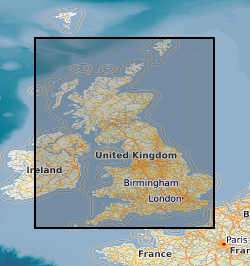
Field photographs of rock formations or modern precipitates from the sedimentary environment. Samples were collected throughout the UK. This data was collected between February 2019 and November 2019. This data was collected to better understand the low temperature cycling of Telurium (Te) and Sellenium (Se) in the geological environment. For example, a range of ochre samples were included in this data. Ochres are a modern precipitate commonly found in rivers and streams which flow through geographical areas with a history of mining resources which are rich in sulphides. Iron from the sulphides are leached out and deposited downstream, coating river and stream beds, giving a red, yellow or orange colouration. Ochres can be a sink for trace metals such as Te and Se, therefore studying these environments could be informative from a resource perspective but also from an environmental hazard perspective. This data would be useful for researchers who require reference photographs for similar studies or as an aid for resampling.
-
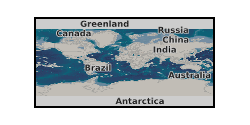
Inductively Coupled Plasma Mass Spectrometry data, part of a suite of 51 elements using aqua regia ICP-MS techniques at ALS Minerals (Ireland).
-
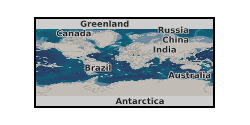
There is a report highlighting the approach for model construction and recommendations for any future work. There is an excel file pf processed data including time, centrifuge speed, water pressure, and temperature data. There is a zip folder containing photographs of the models, the instrumentaiton and granular ice used for model construction There is a zip folder containing the raw data.
-
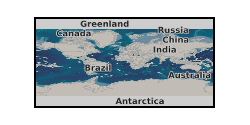
Includes XRF elemental abundance data, LECO data, organic geochemical data (GC-MS), and os-isotope and associated Re and Os abundance data. Geographical area - primarily France (Paris and Voncontian Basin), UK (Yorkshire coast), and Japan (Toyora area, Yamaguchi Prefecture). Also includes globally distributed palaeotemperature data.
-
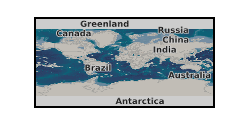
Field notebook photos and scans for NERC grant Tellurium and Selenium Cycling and Supply. Various sites in Ireland, Scotland, England, North Wales, Norway, Utah, Colorado and Wyoming.
-
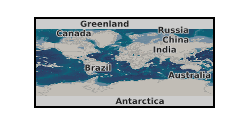
Pyrite samples from selected sedimentary organic-rich formations or associated igneous and metamorphic rocks were analysed by conventional S isotopic analysis. Pyrites were measured in order to provide insights into their origin. Light and variable S isotope compositions in pyrite have been used to infer the influence of sulphate-reducing bacteria (and subsequent Se precipitation by sulphate-reducing microbes), whereas heavier S isotope compositions indicate a non-biological origin (i.e. physical and chemical diagenesis).
-
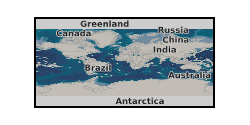
Whole rock and sediment geochemical data covering a range of elements, where values are given in ppm (parts per million) or as a % (percentage). The data is ordered chronologically in an excel spreadsheet and each sample is given a ‘Sample ID’, ‘Lithology’, ‘Locality’, ‘Age’ and ‘Date analysed’, followed by whole rock and sediment values for the following elements; Ag, Al, As, Au, B, Ba, Be, Bi, Ca, Cd, Ce, Co, Cr, Cs, Cu, Fe, Ga, Ge, Hf, Hg, In, K, La, Li, Mg, Mn, Mo, Na, Nb, Ni, P, Pb, Pd, Pt, Rb, Re, S, Sb, Sc, Se, Sn, Sr, Ta, Te, Th, Ti, TI, U, V, W, Y, Zn, Zr. Cells which are highlighted orange signify that the value given was below the detection limit. The values in orange cells have been halved to maintain spreadsheet functionality (i.e. to remove ‘<’ symbols). Cells which have been highlighted blue signify that the value given was above the detection limit. ALS method:ME-MS41L (https://www.alsglobal.com/en/services-and-products/geochemistry/geochemistry-testing-and-analysis/whole-rock-analysis-and-lithogeochemistry) . The majority of the samples included in this data were collected in the UK, but, where appropriate, samples out with the UK were included. The majority of the data was collected from 2014 to 2019. Whole rock and sediment samples were analysed by solution ICP-MS. Samples of ~30 g were individually milled and homogenised, and 0.5 g were digested with aqua regia in a graphite heating block. The residue was diluted with deionised water (18 M¿ cm), mixed, and analysed using a Varian 725 instrument at ALS Minerals (Loughrea; method ID: ME-MS41L). This data was collected to better understand the low temperature cycling of Telurium (Te) and Sellenium (Se) in the geological environment. For example, a range of ochre samples were included in this database. Ochres are a modern precipitate commonly found in rivers and streams which flow through geographical areas with a history of mining resources which are rich in sulphides. Iron from the sulphides are leached out and deposited downstream, coating river and stream beds, giving a red, yellow or orange colouration. Ochres can be a sink for trace metals, so analysing the abundances of these can be informative from a resource perspective but also from an environmental hazard perspective. This would be useful for researchers who require reference data for whole rock and sediment data of a particular lithology or age. This data is was collected by, but not limited to the following individuals; John Parnell, Sam Spinks, Josef Armstrong, Liam A Bullock, Magali Perez, Xueying Wang & Connor Brolly.
-
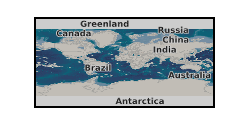
X-ray CT scan dataset of Darley Dale sandstone sample tts6. This sample was deformed in a true triaxial apparatus, and is fully described in the PhD thesis of Stuart (1992, UCL). The sample is a cube, measuring approximately 50 mm on a side. The sample experienced two sets of true triaxial deformation (test DDSS0009 and DDSS0010), with different applied stresses in the 1, 2 and 3 directions. This deformation produced distinct families of brittle microcracks, which were detected using acoustic emissions and seismic velocity analysis. This X-ray CT scan dataset was collected in 2019 at the University of Aberdeen by Dr Stewart Chalmers and Dr Dave Healy.
-
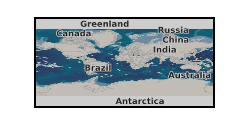
4 tables, and accompanying references, from paper entitled ‘Increased biomass and carbon burial 2 billion years ago triggered mountain building’. Tables record orogen depositional ages, deformation ages, Total Organic Carbon contents and organic carbon isotope compositions, for 20 orogens of Palaeoproterozoic age.
-
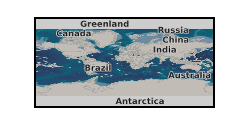
Porewaters from IODP Expedition 366 were extracted from serpentinite mud volcano sediments onboard the RV JOIDES Resolution (see Fryer et al, 2017; 2018 for details). Selected samples were then analysed at the University of Southampton for 87Sr/86Sr and boron isotopes and SUERC for stable hydrogen and oxygen isotope data. The strontium isotope data has recently been accepted for publication (Albers et al., 2019 (In Press) Fluid–rock interactions in the shallow Mariana forearc: carbon cycling and redox conditions, Solid Earth special issue "Exploring new frontiers in fluids processes in subduction zones").
 BGS Data Catalogue
BGS Data Catalogue